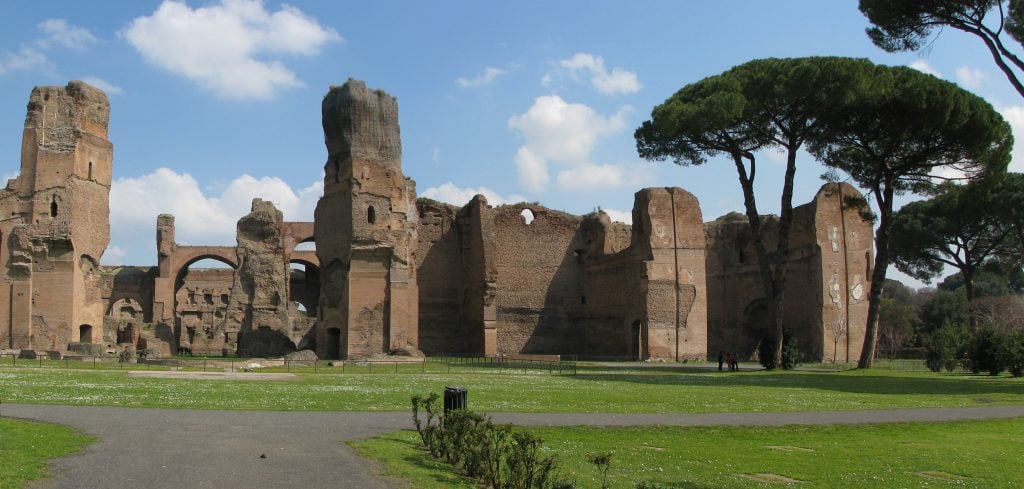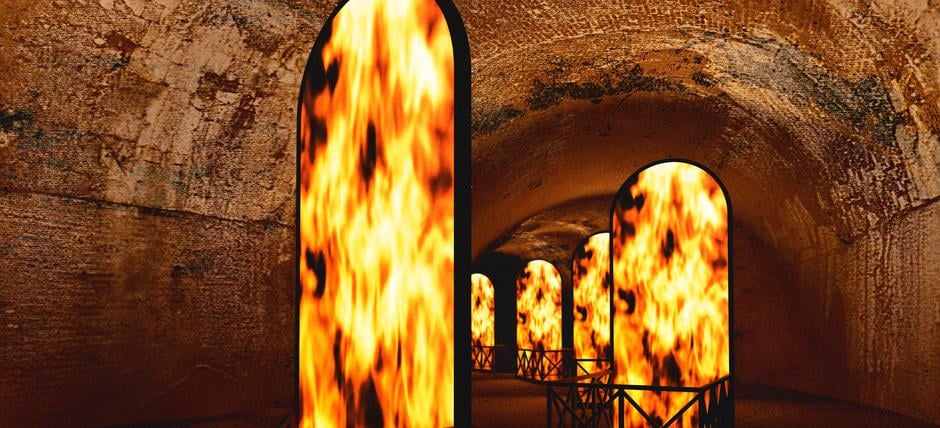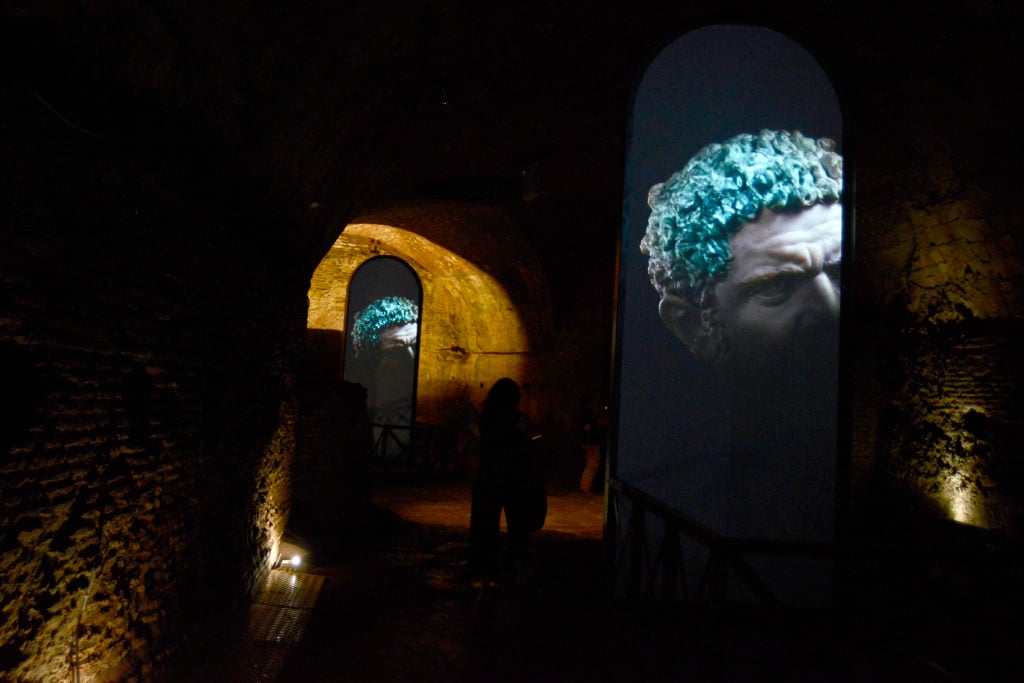Art World
You Can Now Tour the Underground Tunnels That Heated the Famed Ancient Baths of Caracalla in Rome
In ancient times, slaves kept 50 massive brick ovens burning at all times to heat the baths.

In ancient times, slaves kept 50 massive brick ovens burning at all times to heat the baths.

Sarah Cascone

For the first time, the underground tunnels beneath the historic Baths of Caracalla in Rome are open to the public. Thanks to an in-depth, €350,000 ($392,000) restoration, visitors can now walk through the subterranean tunnels and see one of the massive ovens that once heated the water flowing through the complex.
“This is the technological heart of the baths,” Marina Piranomonte, the site’s director, told the Times of London. “Everyone should see it—not just academics with torches.”
Built between 212 and 216 AD during the reign of the Emperor Caracalla, the baths were the second-largest ever constructed by the Roman Empire. The complex included three sections, each heated at different temperatures—the caldarium (which was the hottest), the tepidarium, and the frigidarium (the coolest)—as well as a swimming pool and gymnasiums for wrestling and boxing. Free and open to the public, the baths remained active until the 6th century, before being stripped of their marble and gradually falling into ruin.
During their heyday, the baths were a massive operative, staffed by slaves responsible for constantly stoking the fires of the 50 brick ovens that kept the waters of the caldarium a piping hot 104 degrees 24 hours a day. The complex was powered by a nearly two-mile-long network of lead pipes, with an aqueduct on a nearby hillside supplying some 18.5 gallons of water per second to heated copper tanks.

Installation view of Fabrizio Plessi’s “Plessi at Caracalla: The Secret of Time” at the Baths of Caracalla. Photo courtesy of the artist.
The opening of the space to the public is being inaugurated with a video art exhibition by Fabrizio Plessi, who has installed 12 works inspired by the baths and their history for “Plessi at Caracalla: The Secret of Time,” curated by Alberto Fiz. In addition to references to Caracalla himself, considered one of the most ruthless and tyrannical emperors in Roman history, Plessi draws on imagery of water and fire in the exhibition, which is set to music by British composer Michael Nyman.
Expanded public access to the Baths of Caracalla comes as Rome’s mayor, Virginia Raggi, and Italy’s culture minister, Alberto Bonisoli, have announced plans to make it easier to visit other nearby archaeological sites.

Installation view of Fabrizio Plessi’s “Plessi at Caracalla: The Secret of Time” at the Baths of Caracalla. Photo by Simona Granati, courtesy of Corbis/Getty Images.
“We intend to create an archaeological ‘Central Park’ in the capital,” Bonisoli said in a press conference, according to Wanted in Rome. A new pedestrian route connecting the Roman and Imperial Forums is the first step in the plan to link those Roman ruins and the Colosseum to the Circus Maximus, Trajan’s Markets, and the Baths of Caracalla for a tourist-friendly itinerary.
“Plessi at Caracalla: The Secret of Time” is on view at the Baths of Caracalla, Viale delle Terme di Caracalla, Rome, Italy, June 18–September 29, 2019.